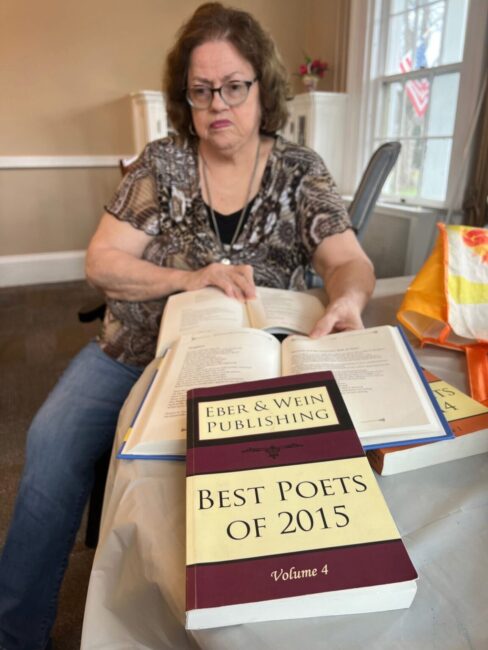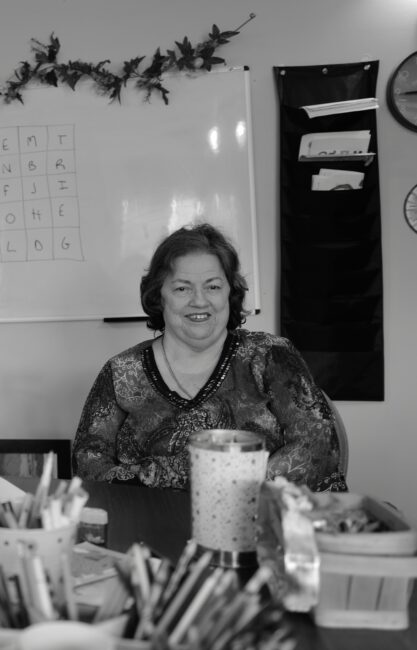(We got the money we needed this morning. Thank you very much. I have enough for the tablet for Sharon and some overage for the Mansion Fund, which is very low. Thanks so much. Bless all of you.)
Sharon needs some help replacing her very cherished computer tablet, and I need some help getting one.
Sharon, a published poet, has been a cherished member of the Mansion community for several years.
The Mansion’s resources cannot provide the specialized medical care she urgently needs. This has necessitated her relocation to a facility that can better cater to her complex illness.
She is looking for another place to go, which is tough on her, as she is very comfortable at the Mansion and has become a cherished friend to me and others.
Her illness is complex and needs special care, and she has to leave the Mansion.
She is finding it difficult to find a facility that will take her; she needs very advanced care. Her daughters wanted to care for her, but she refused, not wishing to burden them, and came to the Mansion.
She thinks she’s getting closer to a facility that will accept in Saratoga. I admire Sharon and her courage and dignity; she is not only a gifted poet but a warm and decent human being bravely facing severe difficulties without complaint or lament.
Leaving the Mansion is hard enough for her, but losing her table and connection to the outside world is especially painful and isolating.
Today, Sharon’s need for assistance has reached a critical point. As her friend, I am determined to help her, but I am also aware of the financial constraints many of us are facing.
That’s why I am reaching out to the Army of Good and others who can offer support. Your help can make a significant difference in Sharon’s life.
The Mansion Fund can’t do it at the moment.

Sharon’s work has been chosen to appear in several “Best Poet” collections.
She asked for and needs a reliable and robust computer tablet to navigate the Internet, which is her passion, interest, and work. It is a link to her whole life, which she will need. Sharon is immensely proud and hates to ask for help. I know it is something significant to her.
The Mansion Fund can’t do it at the moment.
If you can help, that would be great. You can send a contribution via Paypal, [email protected], or Jon Katz (mark it for Sharon), Mansion Fund, P.O. Box 205, Cambridge, N.Y., 12818, or via Venmo, Jon Katz@Jon-Katz-13.
As she has gotten sicker and spent more time in the hospital, Sharon only asked me for some African violets that grow in the woods for her window sill. I gave her some and a regular stream of poetry books. I hope this isn’t the last time I will get to see her; I’m not sure where she is going or when she will leave, although I promised to get a tablet to her wherever she is. I’m hoping it’s before she finds a new home.
She is a student in my Meditation Class and asked me today if I could stay on and talk with her. Sharon is stoic and fiercely independent, and I knew this was serious, although she often speaks with me and has given me some fresh poetry to read and keep.
Two years ago, I gave her a computer tablet so she could research her illness and explore the outside world, including poetry and her many other interests. It changed her life, as often happens.
She told me she spends 90 percent of her time on the tablet. However, the battery died a few days ago and cannot be recharged or repaired.
I told her I would get her a replacement, hopefully before she had to leave the Mansion.

(Sharon in my class today)
The cheapest tablet I found was an Amazon tablet, which cost $94. However, it doesn’t do what she needs. It doesn’t have all of the things that she loves and is used to on her tablet.
The ones I like for her are reliable, long-lasting, and easy to use. They range between $200 and $500 and can do everything she needs. One thing she uses them for is medical research related to her illness.
She says this would be a life-changer. She has had enough of those.
Of the ones I’ve researched, the best one for her is a Samsung tablet.
The one I like is $499, but I’ll get her the best one for the money I have and receive. I am applying as much of my own money as I can. I’m checking out the Apple tablets, which are expensive.
I could use your help to get Sharon this tablet. She is only walking with a walker now, and I can see the pain in her face, although she never speaks of it. Attitude is essential, and the tablet has been her most precious possession.
If you can help, that would be great. You can send a contribution via Paypal, [email protected], or Jon Katz (mark it for Sharon), Mansion Fund, P.O. Box 205, Cambridge, N.Y., 12818, or via Venmo, Jon Katz@Jon-Katz-13.
If the donations exceed the cost, I will place the money in the Mansion Fund. We also have some serious needs to respond to, including T-shirts for a Fourth Of July Festival.
Thanks for reading this, and thanks for any help.




















